Rosso Corsa, Canary Yellow, and the Prancing Little Black Horse
The names Ferrari and Rosso Corsa go together like pasta and marinara sauce. Racing red, however isn’t the only color that has a close association with the iconic Italian brand. Yellow and black also have places of prominence in the firm’s color palette. The reasons for the prominence of those three colors—red, yellow, and black—lie in a combination of national pride, practicality, a bit of traditional heraldry, and a family’s love for a departed military hero.
Nationalism as a concept got a big boost in the 19th century, so it’s not surprising that by the turn of the 20th century, nations competed on playing fields just as they did on battlefields. In an era that spawned the Olympics, with national teams, it’s not surprising that the young sport of automobile racing also was infused with a bit of nationalism. Racing teams didn’t just represent their owners, they also represented their countries. The fact that Britain, France, Germany, Italy, and the United States were all trying to grow their automotive industries made the national competition that much fiercer.
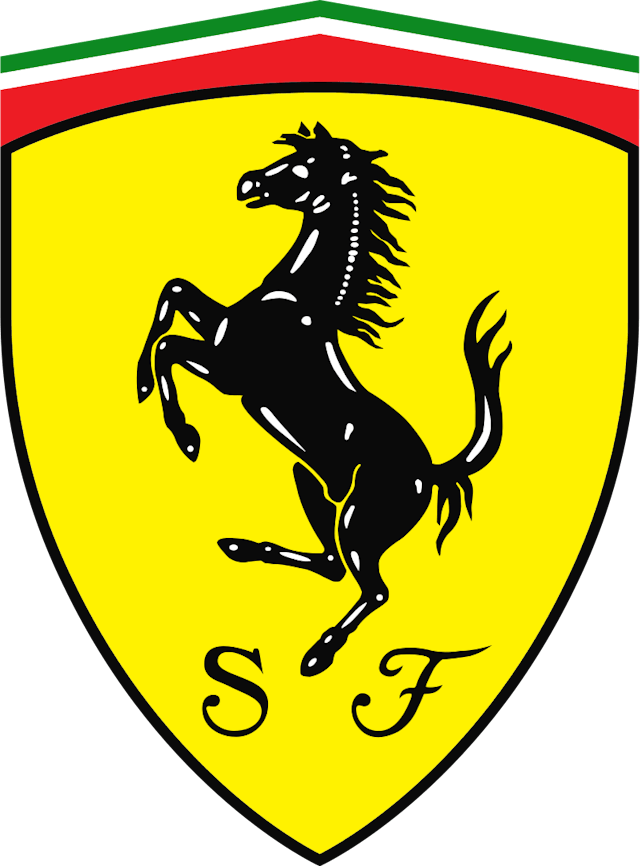
The word “colors” has multiple meanings, one of them being a synonym for a country or military unit’s flag. From the early 1900s until 1968, when Lotus was the first factory F1 team to race in the livery of a commercial sponsor, teams competing in international events like Formula One or sports car racing used standardized livery colors representing the nationality of the car’s manufacturer or the driver. In 1899, James Gordon Bennett Jr., the wealthy owner of the New York Herald newspaper, offered the Automobile Club de France a racing trophy to be competed for by national automobile clubs. Today we think of automobile clubs as providing travel and insurance services, but in the early automotive era those clubs sanctioned many, if not most, races and endurance competitions. The Gordon Bennett Cup was awarded every year through 1905, after which the ACF initiated the first Grand Prix race on roads near Le Mans.
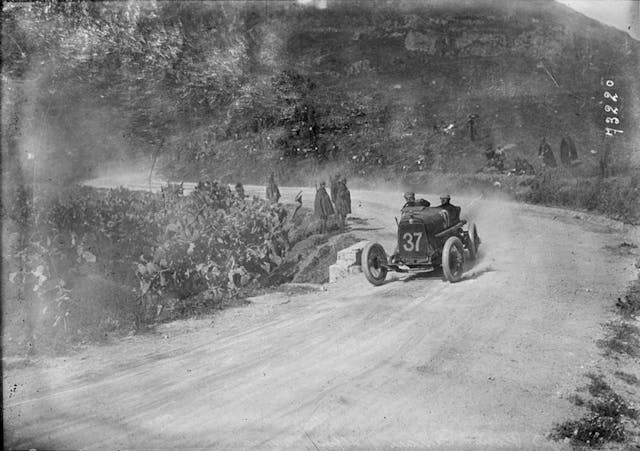
It was aristocrat Count Eliot Zborowski, whose son Louis would later gain international fame as a racer, who suggested that each country’s team in the first Gordon Bennet Cup competition be assigned its own color. That made identifying the cars during the race easier. He chose blue for France, yellow for Belgium, white for Germany, and red for the United States. Great Britain joined the competition in 1902, and since its national flag’s colors of red, white, and blue were already taken, the winning car, a Napier driven by Selwyn Edge, was painted olive green, as green was the traditional color used for British machinery and locomotives. When Britain hosted the 1903 race, in honor of the location, a race track at Athy, Ireland, the UK cars were painted shamrock green, an antecedent of traditional British Racing Green. One might think that the famed “Silver Arrows,” the 1930s race cars from Mercedes-Benz and Auto Union, broke with convention with their unpainted, polished aluminum bodies, but in traditional heraldry, both white and silver are considered the same color or “tincture,” called “argent.”

The tradition of painting Italian race cars red began in 1907, with Fiat’s Grand Prix entrant. As yet I haven’t been able to find any reason why the Fiat 130 HP, also known as the F-2, was painted red, but it won the Grand Prix that year, so perhaps it was adopted as a national racing color for good luck. One year later, 10-year-old Enzo Ferrari attended his first motor race with his father and brother at the Via Emilia circuit in Bologna, sparking an intense interest in motorsports.

After serving in the Italian army during the first world war, Ferrari’s first choice upon his discharge was to get a job at Fiat. Failing that, he hired in at automaker Costruzioni Meccaniche Nazionali as a test driver. His talent as a driver was soon recognized and CMN moved him to the factory racing team, debuting at Parma in 1919. The following year Enzo joined Alfa Romeo and started racing for the team in 1921. By the time Ferrari stared racing Alfas, rosso corsa was already well established as the Italian racing color.
Enzo Ferrari’s victory in 1923 at the Circuito del Savio has become a part of Ferrari brand lore. Ferrari’s win caught the attention of the Count and Contessa Baracca, whose late son Francesco was a WWI ace and national hero to Italians. Baracca, credited with 34 aerial victories, decorated the flanks of his biplane with the painting of a little black horse, cavallino rampante in Italian, taken from the aristocratic family’s shield. The countess, Paolina Biancoli, gave the 25-year-old Enzo a signed photo of her beloved son and encouraged him to use the horse as a mascot for his cars, hoping it would bring him luck.
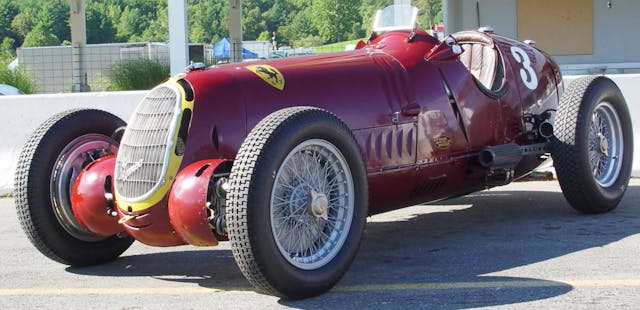
Ferrari launched his own racing team, Scuderia Ferrari, in 1929, running privateer Alfa Romeos with enough factory support that he was able to use Alfa Romeo team drivers at events wherein the factory did not compete. The Cavallino would first appear on a Scuderia Ferrari car in 1932, at the 24 Hours of Spa, portrayed on a yellow heraldic shield with three colored bars at the top, representing the Italian national flag. Antonio Brivio and Eugenio Siena won the race in that car, and some version of that shield has adorned every car that Ferrari has raced since then.

While Scuderia Ferrari cars bore the yellow and black shield from 1932 forward, it wasn’t until 1947 that Enzo started racing a car bearing his own family name, the Ferrari 125s, considered to be the first true Ferrari. The badge that appeared on that racer was the result of a collaboration between Enzo and one of Italy’s leading engravers, Eligio Gerosa. The two men originally met when Ferrari was with Alfa. Gerosa’s company supplied that automaker with enamel badges with its twisted snake logo. The fact that Gerosa was also the founder of the Baracca Association, dedicated to keeping Francesco Baracca’s memory alive, further cemented their relationship.
Gerosa’s original sketch for the Ferrari badge, described as “Da Vinciesque” in detail, used the horse from the starboard side of Baracca’s plane, with the horse facing forward, to the right. Enzo scribbled “Invertire il cavallo” (turn the horse around), on the sketch and the cavallino has been oriented that way ever since. In addition to specifying his hometown’s color of yellow for the badge, Ferrari had Gerosa draw the horse’s hooves as if they were flying, to emphasize speed and Ferrari performance. Ferrari even edited the nod to Italy. Early drafts from Gerosa had the national colors as curved lines but Enzo, never one to imitate others, said, “They remind me of Bugatti grilles,” so the finished version has them as straight bars at the top of the shields. *Every Ferrari, racing and road, since 1947 has born that shield in either badge or rectangular shape.
Even red Ferraris, then, have a little bit of yellow and black.
*The V-6 powered “Dino” branded cars, a memorial tribute to Enzo’s late son, did not carry the cavallino rampante.
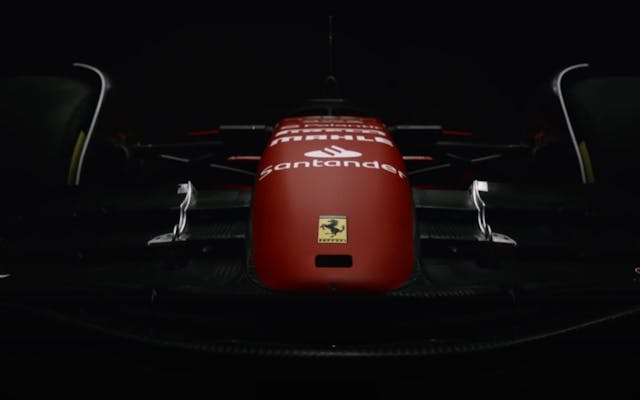
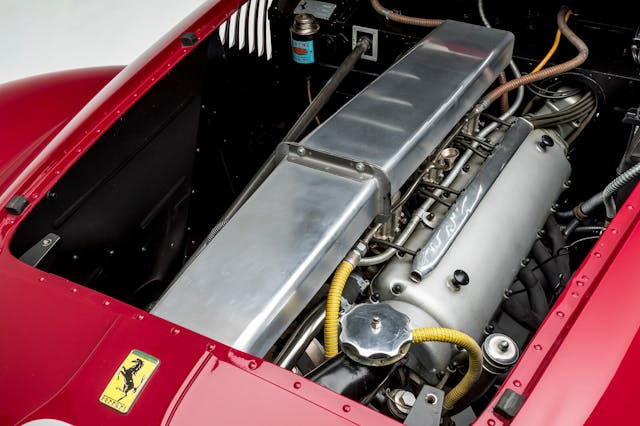


At that first race little Enzo saw in 1908, at the Florio Cup in Bologna, he watched Vincenzo Lancia set fastest lap in his red FIAT F-2, at 82.398 mph, and his teammate, Felice Nazzaro in the other F-2, take the checkered flag.
Vincenzo Lancia had already made the first start, and lap, of a Grand Prix, at Le Sarthe/Le Mans, in 1906.
Isn’t that Ferrari badge a rather expensive option?
Lancia, there is a great name and a once great car company.